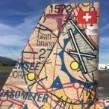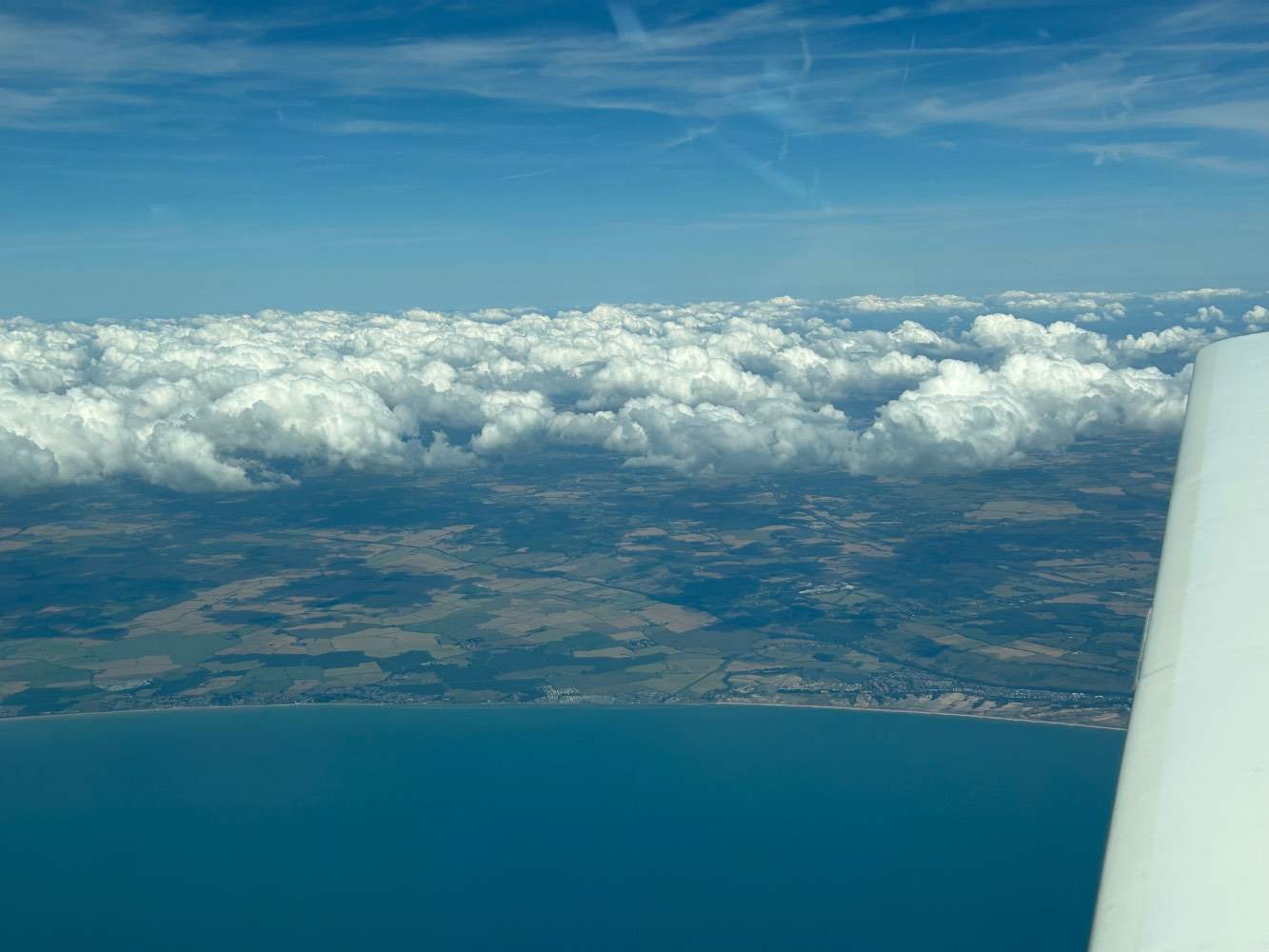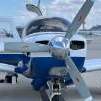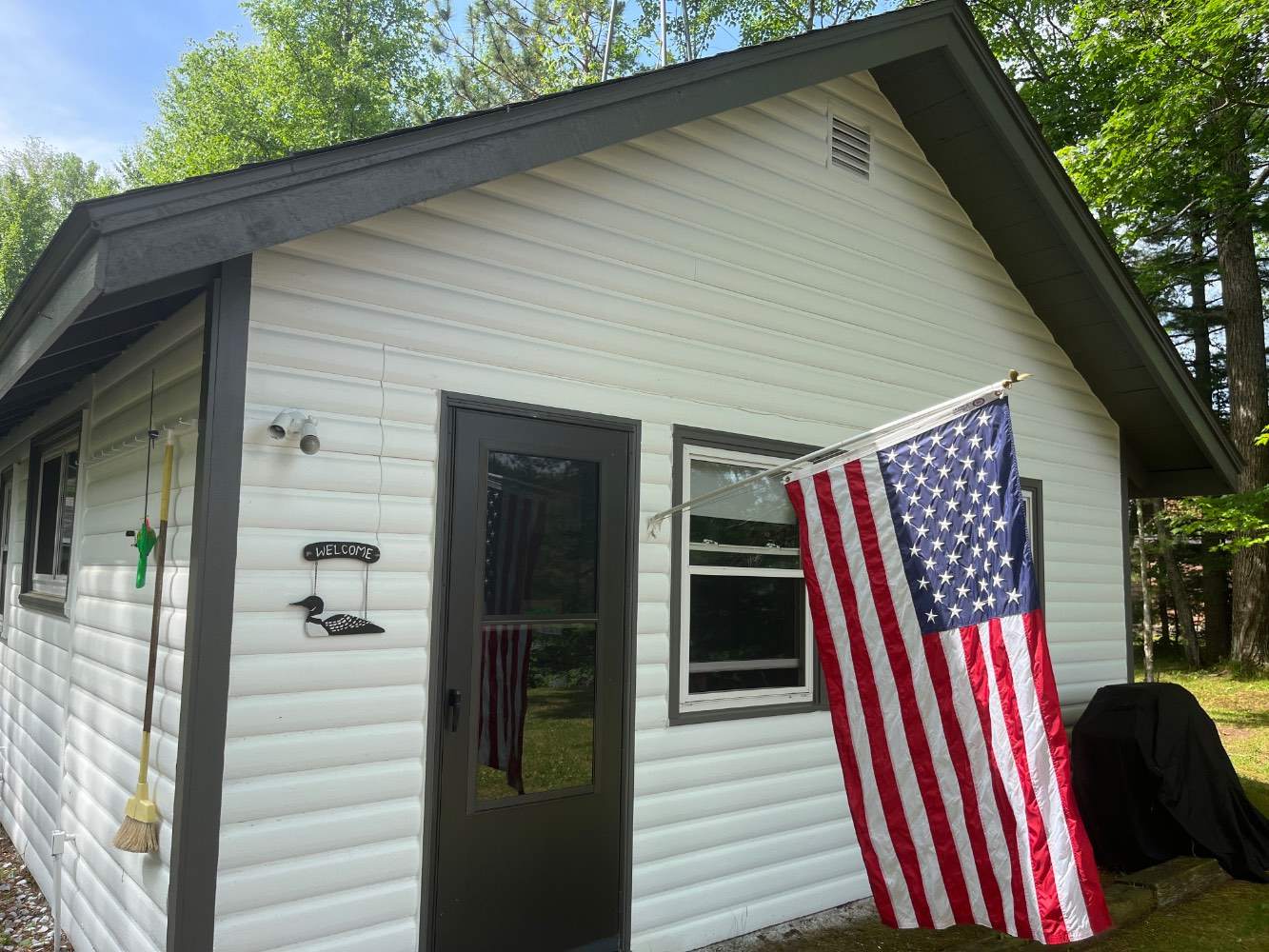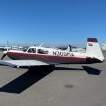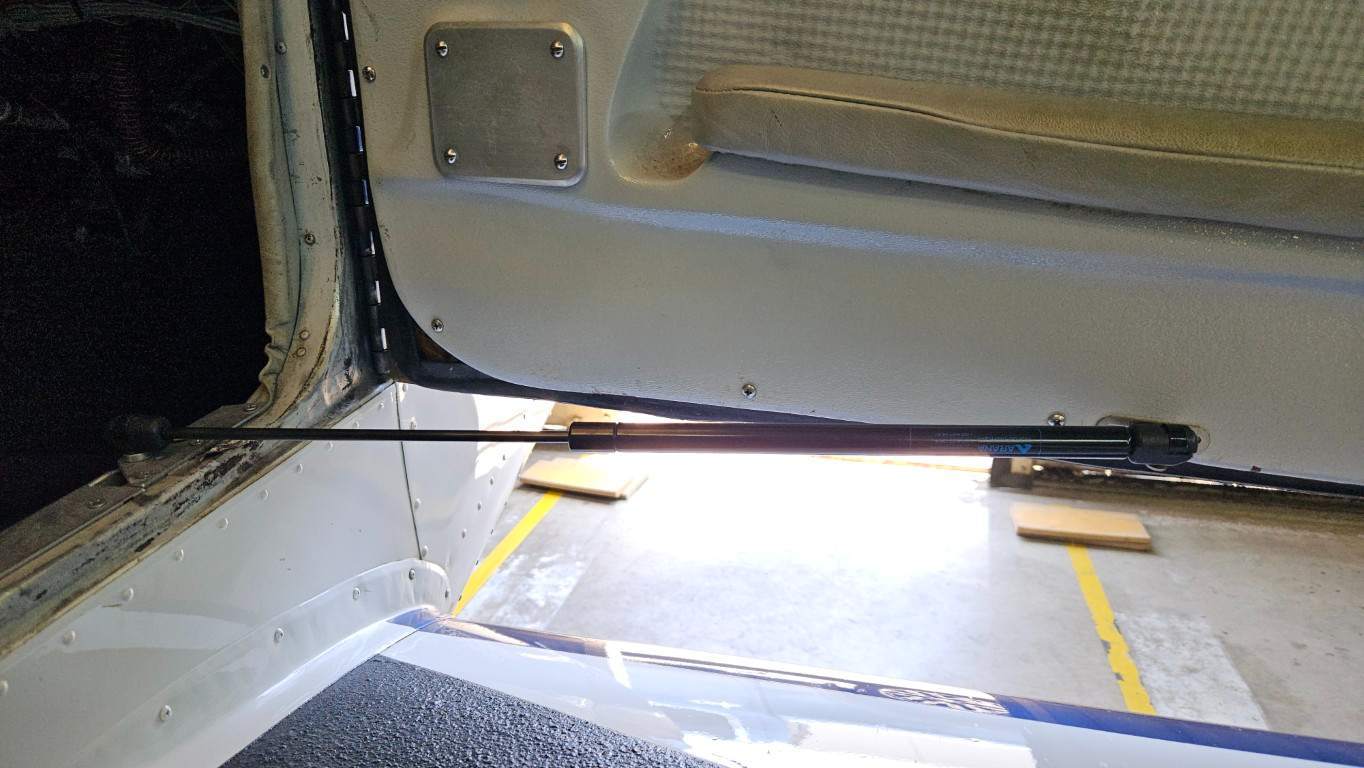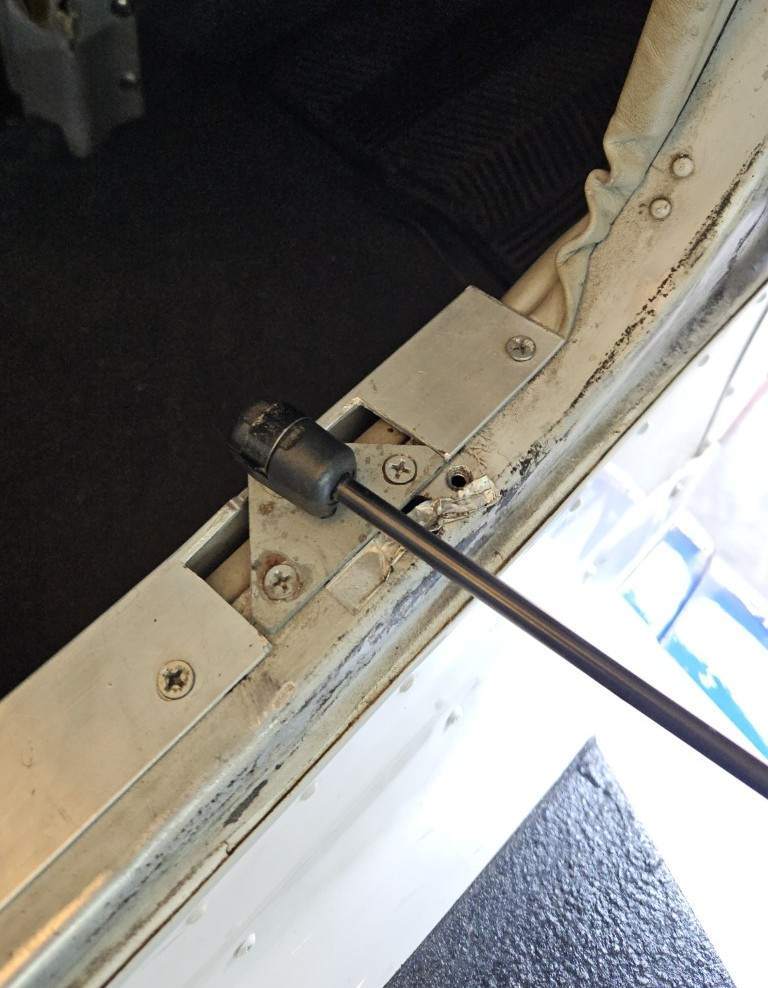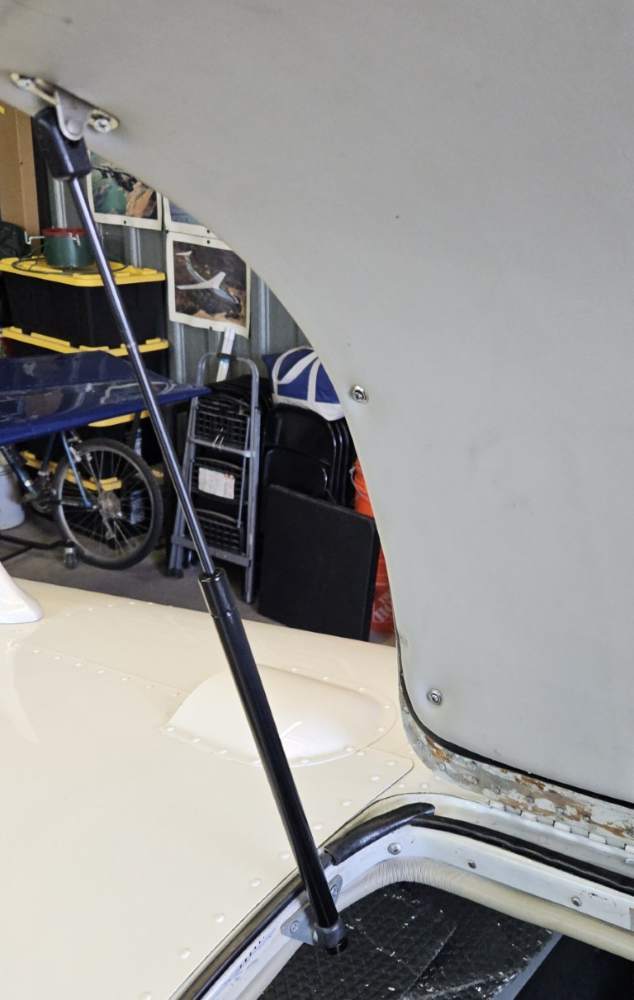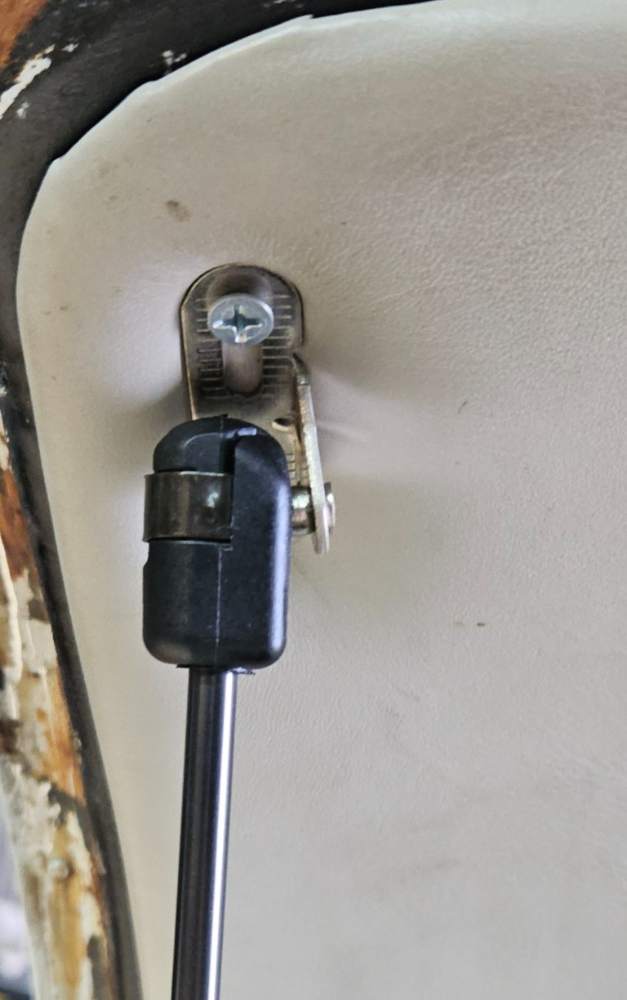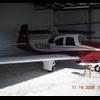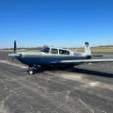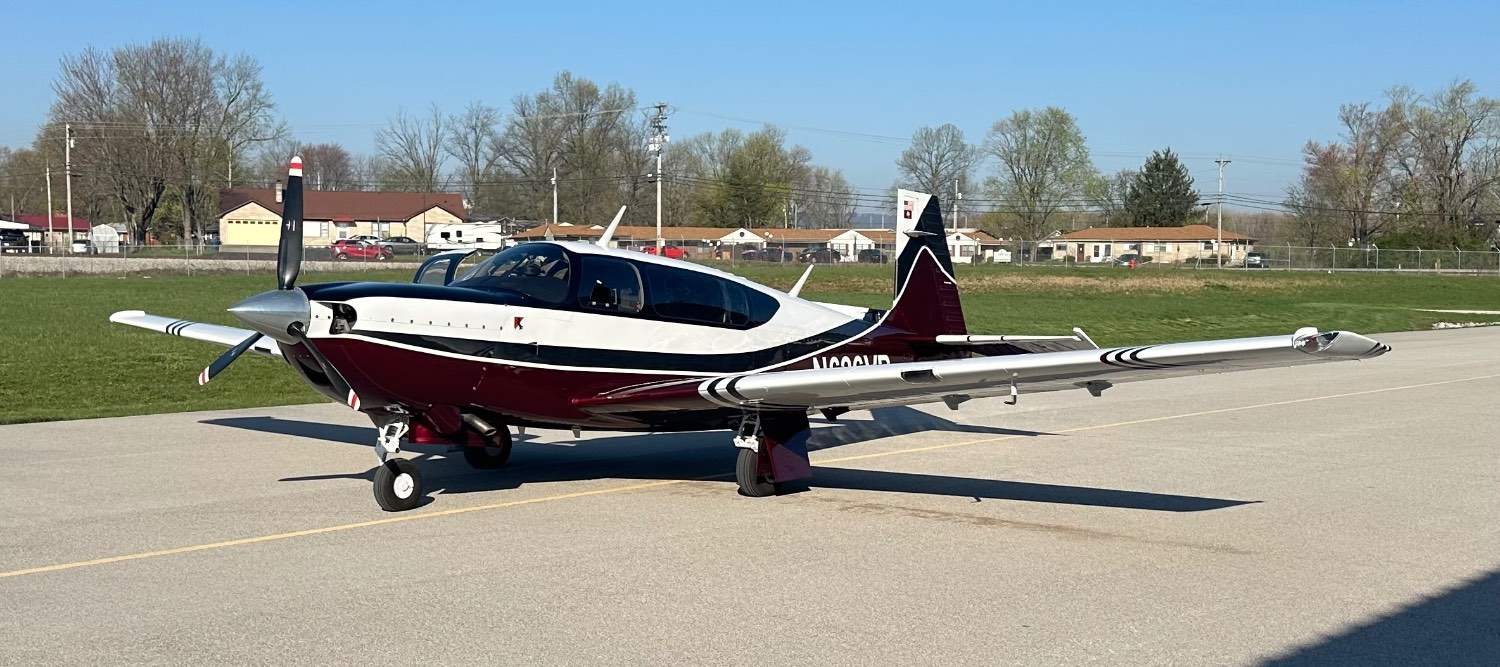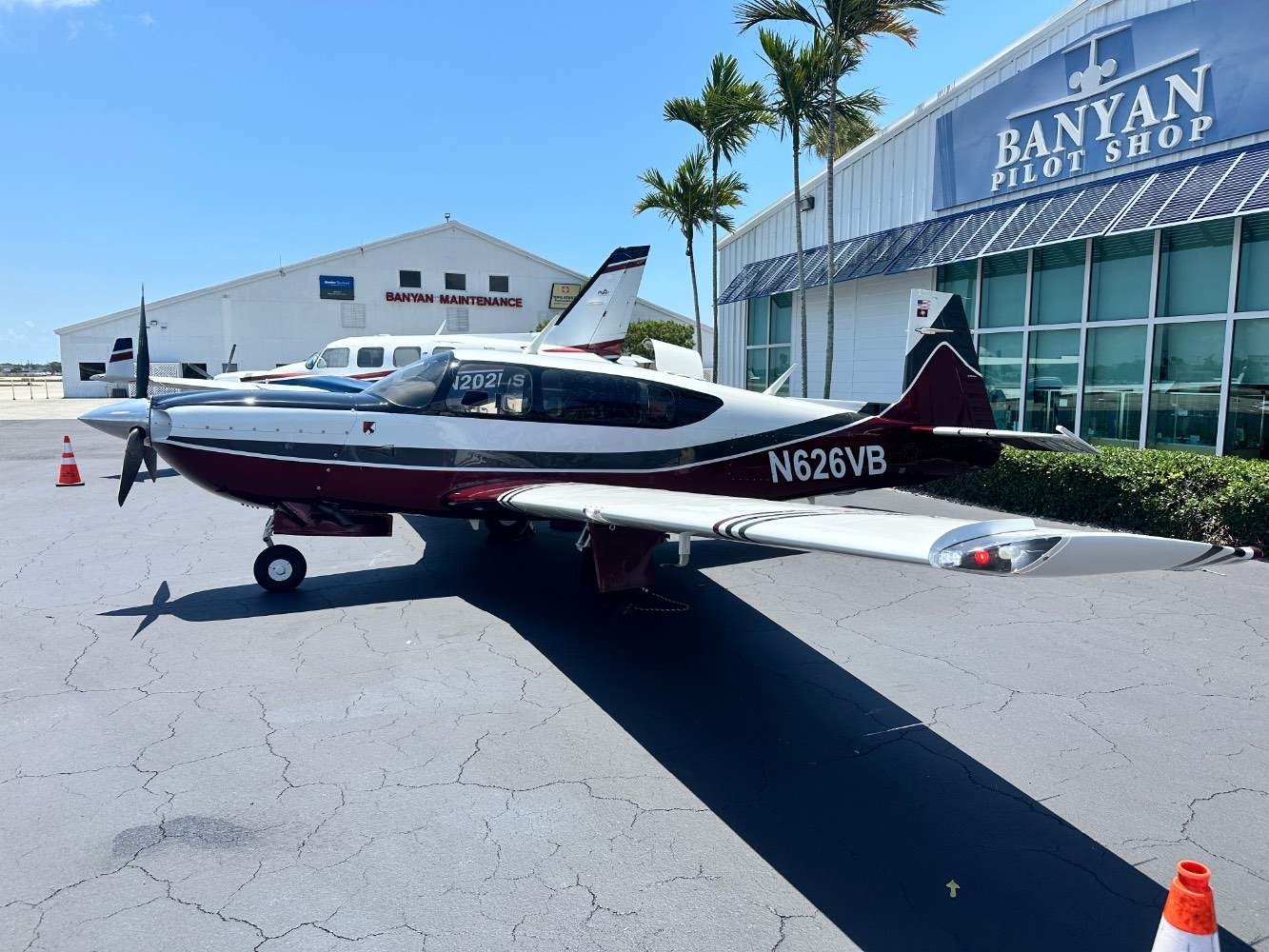Leaderboard
Popular Content
Showing content with the highest reputation since 06/15/2025 in Posts
-
I have a 1991 Bravo. I'm on my 3rd engine. The avionics I put in starting in 2013 and upgraded as the G500 transitioned to the G500 Txi and GTN 750/650 to the GTN 750/650 Xi and GTX330ES to the GTX335 are better than in most business jets I have flown in. The Bravo travels at half the speed of jets. That is fast. Rather than step up to a Turbine with at least double the yearly expense, I chose to keep my Bravo and upgrade it to the max. I love the airplane and its avionics. Structurally, it is the strongest single engine airplane out there. Basically, it is new, panel and firewall forward. I feel like I have a new airplane. I have never looked back.14 points
-
Hi all, I've gone back to lurking these past few months due to a problem with losing GPS signal since the annual in January, which seriously cramped my flying (and my general mood). But I'm happy to say that the cause of the problem has been identified and is no longer an issue So now I'm off on an adventure with the legend himself, @kortopates... I'm so very stoked! Yesterday we flew via Lyon, France to Brugges, Belgium. Today we made the trek across the English Channel and southern England (one photo shows the white cliffs of Dover) to St. Mary's Scilly island with a fuel stop at Land's End. The guy in St. Mary's tower let us do a tour of the Scilly islands before landing on RWY 14 which is 695 meters long (2280 feet). Tonight we will decide where to go next. So awesome!!12 points
-
Yes Commander 112/114 support survives as Commander Aircraft Corp. (CAC). But they have had a very troubled and precarious existence that in many ways is similar to Mooney but with a couple big differences. Commander Aircraft Corp (CAC) produced the 114 and 114TC until 2002 when they filed bankruptcy and ceased production. Three years later in 2005, in a bankruptcy auction, a group of 50 owners named Commander Premier Aircraft Corporation (CPAC) paid $1.7 million for the FAA type certificates, as well as all jigs, tooling and other manufacturing assets. They had aspirations of restarting production in addition to support of the fleet. They moved the assets from the Oklahoma plant and to Cape Girardeau, Missouri where the City stupidly provided incentives. Things did not go well. They never got needed funding and were in debt to creditors. In 2009 they sold to a Montreal based owner named Aero-Base Inc. Creditors had to agree to discounts to get the deal done much like a voluntary bankruptcy reorganization. By 2011, the new owner of CPAC could not get needed financing and Commander Premier Aircraft Corp filed for bankruptcy and ceased operations. Three years later in 2014, the assets of CPAC were sold in a bankruptcy auction to a Chinese national, Ms. Borui Mao, for only $650,000. The new company was named Commander Aircraft Corp (CAC) again. The assets were moved from Missouri to Norman, OK into 2 leased hangars. In 2019 CAC announced that they would invest $8 million in a new manufacturing facility to build new 115/115TC. Nothing ever became of it. I don't think that the 115/115TC was ever approved. CAC continues to sell parts and provide services. The last Commander was built in 2002 by the original CAC. HOME | commanderaircraft Compare this to Mooney: Mooney Int'l is still a corporation with the balance sheet financial liabilities and the off balance sheet liabilities of past aircraft and aircraft part production (18 years going back to everything made since 2007). The so called "new owners", U.S. Financial LLC,, only bought 80% of the company. 20% is still owned by Meijing Group. It is not apparent that the new owners invested any capital into the company. It is more likely that they were looking to get rich with a quick paper flip of the company but are now stuck like a tar baby (remember the Power Point they were using to shop the company?) The main difference between Commander and with the current Mooney situation is that Commander was sold as a "sale of assets" in bankruptcy not once but twice. There were no liabilities assumed by the new buyer(s). (i.e. it was a liquidation of the company twice). Mooney was last reorganized in bankruptcy during 2001-2004. Now we have the following situation LASAR has some unclear deal to manage?/fund inventory?/ take-over? parts fulfillment for Mooney. LASAR's parts guru, Dan Riesland, is located in California and not at LASAR's Oregon home base. Mooney's tech guru, Frank Crawford, who seems to be the glue holding Kerrville support together is in Kerrville With the change, headcount (and hence knowhow), in Kerrville will continue to shrink Don Maxwell posted on Facebook that the Mooney Int'l financials in Kerrville cannot be supported by part sales alone. Three (3) years after the LASAR ownership change and move from California to Oregan, LASAR is still trying (struggling?) to get its PMA's and STC's approved and to market Brett Stokes highlights this in a July 2, 2025 Facebook post He also highlights and promotes that LASAR provides service and support for "Cessna, Beechcraft, Piper and more" - so LASAR's focus is not just Mooney. The Vintage Mooney section is full of posts of how many times LASAR has been called and emailed asking to provide 40:1 gears with no movement. LASAR may be well intentioned, but costs and logistics may overwhelm them quickly - perhaps they already are. From the comments/posts there seems to be a feeling by owners that LASAR will do more to order in quantity and keep larger inventories. That takes capital which no-one (especially the "new owners" US Financial LLC and not even the MSC's which could stock parts as they used to do) seems to be interested in or able to do. So we think (hope) that LASAR has deep pockets? Perhaps the best way forward is for Mooney to be forced into bankruptcy. IThat will be painful and destructive to owners in the short term but could clear the way for the assets to be sold for pennies on the dollar to someone that will just focus on parts manufacturing and supply (and not any dreams of new models, weight increases, landing gear mods or anything). It would get rid of the Chinese and would get rid of US Financial. It would free the IP up for the new owner/supplier with no liabilities.11 points
-
As those of us who installed the early GFC500 autopilot know, there was a batch of servos that were defective. After numerous servo failures were experienced, Garmin solved the problem and gave owners of the bad batch 5 years of extended warranty to get them replaced. I decided to wait until one of mine went bad before having them all changed. Well, the roll servo went bad last December. Since my installation occurred not near my home airport, I had a local shop do the replacements. They spent a lot more time than Garmin had allowed so I got charged for the difference that amounted to over $1,300. I was not very happy, but all of the servos worked so I begrudgingly let it go. Following the issue on Beechtalk and maybe here on Mooneyspace, I discovered that I was one of the only ones who had been charged. I wrote a letter to Garmin describing the situation. About a month later I unexpectedly got a call from Ryan Owens from Garmin asking me about my situation. He said he would look in it. Several months went by and I heard nothing. Memory dimmed and I let it go by the wayside. I got a call from him today. He said he had been thinking about my problem and he wasn't comfortable with the outcome. He asked me if I would be satisfied to have a full year Onepak database subscription to satisfy the situation. I said, "Yes, and thank you". This isn't the first time Garmin has come through for me. I had an out of warranty Aera 760 have an issue and they did an exchange for no cost. Many have asked why I am such a Garmin supporter. In addition to liking the way their products work, I have had this kind of support throughout my dealings with them and I will continue to support them as they introduce new products that I didn't even know I wanted.10 points
-
I'll speak only for myself, but I think others also think about it this way. This may get a little sappy. And there will be a bit of Mooney blasphemy. Owning, maintaining and operating my airplane isn't about being practical or sensible. It's about being passionate about aviation. It's about the freedom piloting my own aircraft affords. It's about the satisfaction I get from keeping her in the best condition possible. It's about realizing a life long dream of owning this particular airplane model and modernizing her to better-than-new condition and capability, and treating her like a friend. Rolling with the punches as things like ADs, new fuels and the general population lay challenges in front of us and finding ways to overcome them, sometimes at great financial expense. Because I love flying, and I love what I've been able to make of this airplane. I've conceded that I'm going to need to do some work on the airplane to adjust for any new unleaded fuel and it's going to be expensive. Yup, ok, I'm in. Now that's not to say this is the last airplane I'll own, even though I treat it as if it is. I'm getting older, and at some point practicality and sensibility will probably catch up with me and I'll need to change my ride to something with fixed gear to be able to keep flying. I've got my eye on the LSA market and have a few candidates in mind for when that time comes. After all, speed isn't everything (that's the blasphemy). But until then, "The Beast" will get my best efforts to maintain and preserve her airworthiness to my own high standards. Some of that will not be practical or sensible. But I'll do it anyway. So @hazek, all this to say yes, perform your due diligence to ensure the airplane is mechanically sound and then pour everything you have into her to make her exactly what you want. If she isn't capable of being that, then it's time to move on to a better candidate. Sensibility and practicality have their place. But sometimes in the course of airplane ownership they pale to passion. Cheers, Junkman10 points
-
Being a machinist and owning a CNC Shop it's a no brainer to me to just make them and move on with your life. It's a little more complicated if you don't have any knowledge in this department. All you really need to worry about is the outside diameter. The length can be easily measured with dial calipers. +/- .003" here would be plenty close I'd think. The inside diameter is just clearance for whatever size bolt goes inside. Again a few thousandths total clearance would probably be good I think. Not too much slop but you want some room for grease to get around the bolt. The outside diameter is critical as it needs to be pressed into the gear legs. If you can knock them out take them to a local machine shop and ask them to reproduce them. Take them the new bolts as well. Some kind of bronze will do. Google is your friend here then cross check McMaster-Carr and see what's readily available. Don't pick some oddball bronze for the space shuttle that your local shop can't get. They're going to charge you for a low run of custom parts but it may still be cheaper than Lasar. It's really not a hard job. Finding a small local machine shop might be the hardest part. Yes I know certified airplanes blah blah but the reality is we're trying to keep antiques flying. If you're not willing to get creative and solve problems when PMA parts aren't available you're going to be grounded eventually for a simple part like this.8 points
-
Captain Sue and her nice J model at Lands End before departing for St Mary’s It’s been a real adventure flying with her here! Sent from my iPhone using Tapatalk8 points
-
8 points
-
Many years ago when contemplating my first airplane purchase, a pilot/owner friend told me that the best part of owning an airplane is that the flying is free. When queried, he explained that the insurance, hangar, inspections and maintenance were so costly that the gas and oil to actually fly it was lost in the noise. However, having the key in your pocket - priceless.8 points
-
A G5 is a very good instrument and a good addition if you have a GPS navigator. My G5 HSI was installed not long after my DG failed, and later after several AI failures I punted and put in a second G5 to replace the AI. I highly recommend them. I've flown with GI-275s as well, and while they certainly have their place, I think the display space on the G5 is used much more efficiently and is more readable than the 275. I'd suggest getting a good look at both before making a decision.8 points
-
After the plane being down for 7 months, I'm glad to be able to post some flying pictures. Wife and I flew from AZ -> MN, and then the plane immediately went in for annual. Two days after annual, after some test flights, we went from MN -> MT, spent the night and then flew in to Canada. Stayed a night in Fort Nelson, and then off to Whitehorse, filed a flight plan/called customs, and then to Anchorage, AK, to visit some friends for a few weeks. It's a different life here, and I love it. We flew a lot of the trip up high (10,000), but I got tired of overflying everything gorgeous and decided to stick to the Alaskan Highway route and fly a bit lower. On the last leg, in Alaska, we descended from 14,500 to 6,500 to get some scenic views on the way in to Alaska. Also passed Trent Palmer and his entourage somewhere in Canada, opposite directions and a few hundred miles of separation. I'd love to upload high-res pictures but I guess that feature is broken for me today, so they're compressed from another source online, then uploaded via url here. Spotting mountains poking out at 14,500. My first glacier sighting.. There will be more. Parked in the backyard.7 points
-
7 points
-
Did a trip recently that was a 3.2 hour flight but would have been an 11 hour drive. By airline, it would have been 5 hours gate to date, plus 1 hour to airport on my end, plus arriving 2 hours ahead of time then car rental, then 1+20 drive to actual destination. Total almost 10 hours, like driving. I am 7 minutes from my hangar and it takes maybe 30 minutes to pull airplane out, load, preflight and get moving. At other end, rental car was brought to the airplane. Less than 30 minutes from landing was at lunch.7 points
-
7 points
-
I've struggled with this on a much smaller (dollar) scale (I have a 1970 M20F with six-pack/GNS430W/STEC30) The conclusion I've come to is that I love to FLY; the toys in the panel are distant to mechanical condition. Could I afford to upgrade? Yes, but the 'value' just isn't there for me. I'll put the money into the engine overhaul, but I don't see myself spending the coin on the avionics or fancy interior. Honestly, what I have is really all I need; and I don't really want the 'glass'. YOLO most certainly applies, but I'd rather spend on other entertainment (e.g. sailing yacht) Neither hobby is financially prudent! Realistically, I ask myself how much longer will I be flying? Maybe 10 or 15 years...sure, we all like to think we will be flying octogenarians, but even so, it may be in a Cub...mission will likely change. For me, the pleasure is in the flying itself, if the machine is safe the rest is not that important. Sorry for the ramblings...if you can afford it and it brings you pleasure, then go for it!7 points
-
The troll only lives when he is fed. Ignore the troll, don't feed him and he will direct his attention to other online forums where they feed him and engage him in endless debates. (https://behaviourhelp.com/a-z-challenging-behaviours/argumentative-behaviour#:~:text=Here are some common causes,to a propensity for argumentation.) He has a hard time remembering which of his screen names to use that hasn't been blocked on Mooneyspace. Perhaps supplemental oxygen would help.7 points
-
I have used Gee-Bee stuff on 3 airplanes so far and never been disappointed. The baffles he makes fit perfectly. I just put in door seals on my F and they went in nice. I have been an owner for 15 years and some of the people I have been using have aged out of the business. Gee-Bee is still in the game making quality products. I am a satisfied repeat customer. Just a pirep.7 points
-
The airplane takes off when lift = weight. Lift is a function of TAS^2; it is not affected by thrust and thus choice of propeller which only affects how quickly the airplane accelerates to takeoff speed. I cannot account for the differences in the POH speeds; there are some anomalies in the Mooney performance data between various models. Perhaps it is a difference in technique by different test pilots. Rotation is really a concept from jets and not directly applicable to piston powered airplanes. The best technique is to apply a small amount of back pressure during the takeoff roll and let the airplane fly off when it's ready rather than trying to yank it off the ground (i.e. rotate) at a particular speed.7 points
-
I'll spare the details of my long plane search before reaching out to Jimmy. The short and sweet of it: I saw some good planes, I saw some bad planes. I met some honest owners, and a rather dishonest owner or two as well. Nothing was quite right for me. In my travels I had numerous people say "why don't you just call Jimmy Garrison?" So I did. Now I own a Mooney! Jimmy was very forthright and honest, and did not make any speculations. If he wasn't 100% sure on something, he would make that fact abundantly obvious but give me examples of "how it usually goes" based on his experience. Low and behold, that is how it went for me. He recommended aero-space reports for the title search and escrow. It was inexpensive, and Christina was great to work with. She found an old lien from decades ago, and got it released. She got the FAA documents in order and everything went through without a hitch, the first try. I am long winded and sarcastic (not very good pilot communication, I admit) and Jimmy is quite the opposite. Short and to the point. Despite this great descrepancy in communication skills, he was patient and tolerated my antics very well After making a verbal agreement and having the contracts sent over, I paused before signing. I had not actually seen the plane in person. I saw plenty of photos and had all the information, but I had a brief moment of panic. I realized I had relied solely on the reputation of Jimmy, a man I had never met. So I called him up at the last minute and said "I'm buying the first ticket to Texas to look at the plane, I just need to put my eyes on it before I sign this." He understood. Once I got there, I knew within 5 minutes that this plane was exactly as advertised. No surprises. I signed the paperwork right away. So I guess Jimmy is "as advertised" according to his reputation as well. In this case, the seller wasn't interested in interacting with the buyer, and I understand that. With Jimmy, that direct communication simply wasn't necessary. He took care of everything, and took care of me very well. I hope that I have my forever plane but if I don't, I'll be going straight back to Jimmy at GMAX.6 points
-
So some years ago I purchased a plane and the owner was keeping the tail so I had to go through the process of reprogramming the ELT and transponder. This led to me going to NOAA and actually updating the info on the ELT. I was reminded the importance of this a few days ago, when I got a call from law enforcement about an elt signal they had received and I was still the contact Apparently the owner, whom I know well and talk to, had not done this, and when they heard and identified the beacon they reached out to me to make sure there was no emergency. I asked several people I know with planes and realized most people do not know this and don’t go through the process If you have not done it with your current plane you really should . ps. It’s free6 points
-
Sorry, but prop touches, it is now a full stop. You have NO idea of the condition of the prop or engine.6 points
-
Looks like MooneyMax is in Branson this year. I went last year and enjoyed the lectures from Frank Crawford and Bob Kramer from Mooney. Enjoyed the factory tour. But wish there was a Mooney Owners Maintenance workshop attached. I know that years ago Maxwell did a maintenance workshop. Not sure if that could ever be revived?!? But how about a clinic put on with Maxwell and Mooney…down in Texas that has a “work day” volunteering at Mooney to get the factory cleaned up and workshop in the shop to go through a Mooney annual first hand of what they look for, owner maintenance items, and pictures showing “the Mooney Factory is still going”! Lunch at the factory lunch tables. Hands on gear swings and flight control rigging. How to properly lube and what products to use. How cool would that be?! Yes, I’m day dreaming. Can’t go to MooneyMax this year. But this would be great phot op for Mooney to have people at the factory…cleaned up, and working on Mooneys. Everyone flies in to Kerrville and the Mooneys are all staged in the hangar together! Awesomeness!!6 points
-
Ding! Ding! Ding! Winner, winner, chicken dinner! This was the issue, now fixed.6 points
-
MT Propeller bragged about this too, but it turns out that their props are infinitely repairable as long as you bring infinite amounts of money to completely replace anything that might look like it is thinking of wearing out. Aerodon6 points
-
6 points
-
6 points
-
One note of caution from a concerned citizen on this lovefest… yes, I’ve used jimmy several times. Yes I enjoyed our conversation. Transaction was completed smoothly. However, he sells a lot of Mooneys sight unseen. He probably looks through the logs, although I caught some things on my recent purchase that he didn’t see (and both of us missed a big one in the logs). He hasn’t actually looked at these remote sales except for pictures. I say this because he sold my airplane without seeing it and I hope I didn’t misrepresent it to him or the new owner. Not everyone is going to sell through a remote broker and be totally honest/open. Due diligence folks. Don’t count on a broker catching everything, especially on an airplane he’s not seen.5 points
-
There is absolutely zero uncertainty that landing unintentionally with the gear up is the least risk to persons. Sliding a few hundred feet on the runway only bruises egos. Most will tell you it was there finest short field landing! But going around after “kissing” the ground is a huge unnecessary risk to persons if you consider the number of fatal accidents. It’s entirely an effort to save the plane - not persons. Isn’t that why we insure our aircraft? Sent from my iPhone using Tapatalk5 points
-
5 points
-
The Gear Warning CB powers the gear down floor light, the Gear Down and Gear Unsafe annunciator lights and the gear warning sonalert (tone generator in later models). So, the symptoms indicate some issue in this circuitry. The only part of the circuit that is active when the gear is moving but not active when the gear is either up or down is the Gear Unsafe annunciator. I would look for a short circuit somewhere in this circuit.5 points
-
If you have been cyber stalking me on FlightAware, you know I haven't been flying much lately. Between my new shoulder and way too many periodic inspections and installing a new audio panel, me and the plane have been down for a while. So I decided to take a long cross country. Sorry, no pictures. The wife and I decided to fly to a Savannah GA. I got IFR current, the plane is IFR current and all my databases are up to date. We flew all the legs out there VFR so we could listen to an audio book. I should have flown the last leg IFR but I didn’t. We decided to fly the first day to Hot Springs AR. We got the last hotel room available in KHOT. We could have stayed in the fanciest suit in a 4 star hotel for what we paid for that POS room. The whole town turned out for the fireworks display. It was refreshing to see small town America in action. We got a seat on the patio at a Mexican restaurant near our hotel. We ordered a beer, chips and salsa and had a great view of the fireworks. Both legs getting to KHOT were flown at 13500. We were getting about a 15 KT Tailwind the whole way, so we were scooting along pretty good. The next morning we decided to do two legs to get to get to Savannah. We could have done it in one, but we don’t like to fly that long any more. We flew to Walker Co airport in Jasper AL at elevendy five and got lunch at the Pie Factory. It was great pizza. The crew car is a brand new Jeep Renegade, which was kind of fun. The leg to Savannah was a little more dicey. I tried to do 11500 , but the clouds kept rising and they were getting thicker. I didn’t want to get stuck on top and have to get a pop up IFR, so I just went under. It was more scenic that way anyway. And besides, there were thunderstorms ahead and I would much prefer to be VFR around thunderstorms than IFR, you have a lot more options. I had to deviate around a couple including a big one about 40 miles west of KSAV. On final there was a big one approaching from the north. The rain shaft was already covering the north half of runway 01 and the tower when I landed on 10. It was a bit sporty. After I landed the tower asked for a PIREP. They sounded very concerned. I told them it was moderate. When we got to Sheltair, it was pouring. They were nice enough to come out with umbrella's. Anyway, we are here enjoying the area. I will write another post on the way back. I may even take some pictures.5 points
-
This is not unprecedented. The flood of '32 was very bad I heard the stories of the old timers talk about it.. '78 wiped out Center Point, TX, taking many lives and campers. '87 was another bad one, taking many RV'ers lives and a school bus of 10 summer campers fleeing the flood waters. Growing up, the river flooded all the time. It was normal to us. If the rain hits Kerrville, the river does not swell so much. If the headwaters of the Guadalupe are hit with heavy rains, as this was the case with all the major floods, seek high ground immediately. This one happened so fast and after midnight. Flood warnings and evacuation warnings were every 15 minutes on my phone starting at 11pm. Knowing all this doesn't make it less sad. The airport is full of choppers and search planes. KERV is definitely serving it's part. Mooney factory has a dry creek that feeds the river but did not backfill enoughto reach inside the factory. I "think" that happend with the '78 flood.5 points
-
Perhaps it was Mooney personnel that kept insisting on referring to the tubular frame as a roll cage: Or maybe Flying Magazine picked up the idea of a roll frame when they toured the factory: https://www.flyingmag.com/photos-mooney-factory-tour/ Or maybe Mooneyspace has been the culprit in the 300 times it's been mentioned on here: https://mooneyspace.com/search/?q="roll cage"&quick=1&updated_after=any&sortby=relevancy Or heaven forbid . . . maybe it was Al Mooney himself:5 points
-
Yeah that's a total loss. If I was the owner and I walked away from that I would hope the insurance company wouldn't want to rebuild it. Walking away alive they hit the jackpot.5 points
-
There's not a lot more efficiency that can be squeezed out of modern propeller designs, so most of the innovations now are on reducing weight and reducing noise. Don't expect anything to give you a significant increase in speed without somehow putting more power into it.5 points
-
I think having a Mooney solely as a toy is fine. 50% of the "defined mission requirements" are just people talking themselves into buying the toy to begin with Life is short!5 points
-
I’d invite you to look at it a litttle bit differently. assuming money is not “the” controlling reason. And assuming you have no immediate plans to sell and are capable of holding the asset. If you renovate your plane and even drop a new engine, you would spend 300k tops. for that 300k you will have a practically brand new airplane, that you know every squeak and purr. It will be done exactly to your preferences and special appointments. it will be just like a brand new car x100. It will also be very easy to sell later and probably retain the value over any in her age group you can of course sell it and buy something quicker and probably save at best 100k, more likely 40k after you run through squawks, upgrades deferred maintenance etc. so yes, it’s still real money, but even then you will only be close to what you really wanted, with some compromises. or fly her like she is until you have to do something. No wrong answer, but a restoration ant being able to pick a la carte isn’t all bad. do you really think a gas will be banned in 7 years there?5 points
-
The median age of the entire Mooney fleet is probably around 1970. I think they made more Mooney’s in 1967 than the entire time since 1990!5 points
-
I wouldn’t do a specific aircraft type, I would do a specific aircraft. I don’t want you working on other peoples airplanes.5 points
-
5 points
-
5 points
-
The video seems well done, however I threw up in my mouth a little when she mentioned the F-16 during the stability discussion and the video shows an F-15. I’ll try to finish it later because I did like it up until that point.5 points
-
Just talked to Jon as mentioned by @201Mooniac. Jon was very helpful. Talked about going to Osh and Sun n fun. Offered the discounted price that was offered during Osh. It seems that the Inogen is selling well at the shows. New version is the Rove 6. Well needless to say I am a little lighter in the wallet now. Ships tomorrow and should arrive by Thursday. Jon was a pleasure to work with.5 points
-
No reason to post other than I'm just excited it's "done". It's been a MUCH longer and more expensive journey than I expected and if we're being honest, I'm not totally sure it's been worth it, but I'm glad I don't have to touch it again. Before/After pictures below (how I bought it and how it is now). The previous owner (well the one that actually cared about the plane) is @rainman and he did a beautiful job with the initial upgrade. First iteration: When I first got the plane, I wanted to upgrade the GPS units. I ended up going with a 650/355 combo. In hindsight, I should have done a 750/215 or something similar. I don't use the second GPS other than for the Connext, and at times I just always have it on the "nearest" page. This upgrade wasn't done right. As a matter of fact, it was done so terribly wrong, and went so far over time, that the shop that did it didn't charge me. They didn't even really make eye contact, they just handed me the keys and the logs. The biggest red-flag was when they said the GPS was flakey and they didn't know why, but it didn't dawn on them that it's hard to get a GPS signal from inside the hangar. Ghost traffic, comm 2 didn't work, transponder was flakey, etc. Second iteration: After noticing all of the glaring issues, I had another mechanic look at it, and he fixed all the wiring, installed a 345R, Aera 760 (awesome unit, my wife loves it) and a handful of other things I can't even remember. Third iteration: Once that was done, just before headed home (MN -> AZ), the AI took a spill. My mechanic sent me a G5 and I decided to install that and nix the vac system as well. Fourth and final iteration: Mechanic back home took the plane in for an oil change and a few other things. He noticed some glaring airworthiness issues that were ignored by the recent overhaul and annual. While fixing those, he noticed the JPI was illegally wired (showing proof) and stating I should just upgrade it. The fastest upgrade was a 275, which was fine since I have all Garmin anyways. He also threw in the "I mean... while you're doing it.. just move to a 275AI, too... right? And SmartGlide?..". Some other upgrades would be some LED strobes, LEMO plugs, complete rewiring in the engine bay (mangled from the overhaul shop), new engine frame, fixed cowl flaps, new brakes, overhauled autopilot, etc etc etc. The most hilarious part is my audio panel is horrendous still. I feel like I'm flying with a Tom Ford suit but NewBalance shoes. I can't talk to my passengers unless I yell, and if I have a mask on for FL180+, I can't talk at all. It's gotten so bad, I actually would switch over to 123.45 to hot-mic and talk to my passengers if I needed to. So, that's the last and hopefully final upgrade, which I'll probably throw in a PMA 450B. I've already got way way too much in this panel for a 1979 M20K.5 points
-
Mooneyspace is a great source of information from people who have experience that we can all draw from. Occasionally someone signs up on here that really enjoys taking a contrary view about nearly every subject and has very little to zero personal experience on the subject they are arguing about. They never pay the money to be a supporter on the site and are here to stir things up and argue and don't contribute in any positive way. They get banned and then come back with another screen name. Most people who have been on here a long time have learned to ignore them and not take their bait to engage in endless debate. There's always the ignore option on their profile. (Beechtalk's policy of people using their actual name as their screen name seems to help people behave better and not hide behind a random screen name.) Personal observation: I've had an Inogen for close to 10 years. I bought it off of a Craigslist ad with 10 hours on it for $500 and although I have built-in oxygen I very rarely use the on-board oxygen. My canisters on the Inogen are still good - I only use it for flying and the bottom line: it keeps my SPO2 where I want it. I end up using it on almost flight, whether it's 8000 or in the teens. Very rarely do I go into the flight levels, but when I do I plug into the on board O2 FL180 and above, with a mask. It has opened up options for me - if I need to climb higher I'm not restricted by how much oxygen is in my on-board tank. I still have my on-board O2 plus a few cans of Boost in the back pockets of the front two seats.5 points
-
5 points
-
^^^THIS^^^ @M20GforMe this is the bottom line. Personal experience and reading this forum has taught me that an airplane for sale that does NOT have deferred maintenance is a rare bird. Americans, or the pilot community, or maybe just Mooney people want "cheap" above all else, and nobody wants to spend money on an airplane that has fallen into disuse. You have received a ton of advice here mostly suggesting that you got screwed on the sale, and that you continue to get screwed by your shop. I'll swim upstream and say that a quick review of the estimate did not look wildly out of line to me. The hourly shop rate is not bad for your part of the country -- check out the hourly rate for a plumber. Sounds like they looked at everything, found a ton of discrepancies, and estimated the time and materials to fix everything. If I were in your shoes, I would work with this shop to understand what needs to be fixed to get your annual signed off and what can be deferred a year. The cost is brutal, but if you burn this bridge now, you may come to regret it later. Good shops are hard to find. Personal relationships are everything.5 points
-
Get in touch with Mike Busch at SavvyAvaition.com right now He is the guy you need for help RIGHT NOW His fees are reasonable and the cheapest money you will ever spend on your plane. savvyaviation.com Run don't walk to your computer!!!5 points
-
It depends. On an approach that I'm familiar with, and I'm very current, and the autopilot is working, and there is not a lot of turbulence or wind shear reported, and there is a convenient alternate nearby with better conditions, I'll happily go to 200-1/2. If any conditions, or combination of conditions are not met, I will increase the planning minimums or cancel the flight depending on the severity or combination of conditions. Once near the destination, only low level turbulence or windshear will cause me to not shoot the approach.5 points



